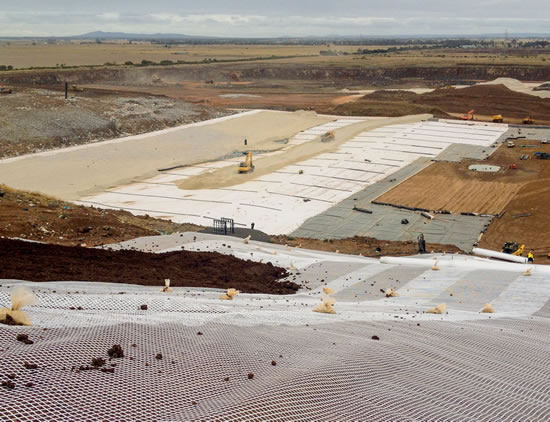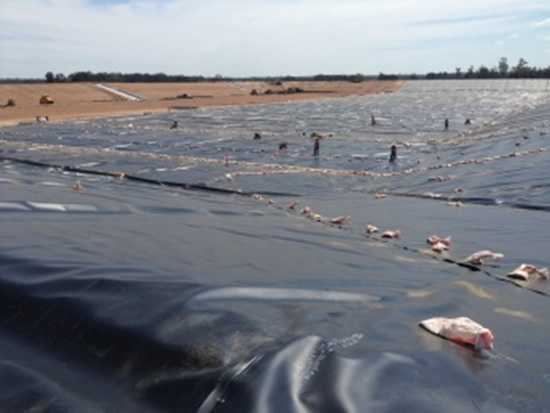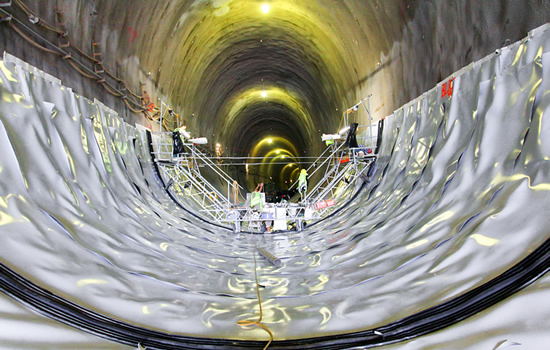The International Geosynthetics Society Australasian Chapter will host a multi-city seminar series on geosynthetic technology in water containment, waste disposal facility rehabilitation, and tunnelling. The seminar will be held in Auckland (New Zealand) on June 26, Melbourne (Australia) on June 28, and Brisbane (Australia) on June 30. Speaker and topic info is included below.
DOWNLOAD THE EVENT FLYER (PDF)
ONLINE REGISTRATION

The IGS and its 44 international chapters create seminars, conferences, publications, and other engineering professional development opportunities. (See, for example, the November 2017 hydraulics events in NOLA.)
GEOSYNTHETIC TECHNOLOGY SEMINAR SESSIONS
Experts from the International Geosynthetic Society will present on a range of topics:
- Russell Jones, the IGS President, will present a case study on a 200,000 m³ leachate storage facility and the challenges of building on landfilled waste
- Peter Legg, the IGS Treasurer, will discuss closure and rehabilitation of waste disposal facilities
- Jorge G. Zornberg, Professor at The University of Texas at Austin, will present on the topic of wind uplift on exposed geomembranes
- Chungsik Yoo, IGS Vice President, will address the topic of geosynthetics in transport and hydraulic tunnelling for drainage and waterproofing.
The individual sessions are described in the event literature as:
Building a Large Leachate Lagoon on Poor Ground
Russell Jones
This presentation will cover the design, construction and monitoring of a containment facility to store 200,000 m3 of leachate. As much of the leachate was to be contained above the surrounding ground level, the structure was defined as a large raised dam under the UK’s Reservoir Act 1975. The challenges of building on top of old landfilled waste with groundwater just beneath the surface will be described, and the benefits of using various geosynthetics products will be demonstrated.

Closure and Rehabilitation of Waste Disposal Facilities
Peter Legg
This presentation will cover the design process for the closure and capping of waste disposal facilities (landfills). It will include the following sections:
- Objectives of landfill capping and rehabilitation
- Important design aspects
- Cover components
- Veneer stability issues
- Drainage
- Concluding remarks with three recent case histories of landfill capping and rehabilitation.
Exposed Geomembrane Covers
Jorge Zornberg
Exposed geomembrane covers are particularly suitable in sites where the design life is relatively short, cover replacement is expected, landfill sideslopes are steep, cover soil materials are prohibitively expensive, or if the landfill is expected to be expanded vertically. In addition, the design of exposed cover systems has been found to be particularly advantageous in sites where post-closure involves the generation of alternative energy (e.g. using solar panels). Key aspects in the design of exposed geomembrane covers are the assessment of the geomembrane stresses induced by wind uplift and anchorage requirements. Wind uplift of a geomembrane is a function of its mechanical properties, the landfill slope geometry, and the design wind velocity. Wind uplift design involves assessing the maximum wind velocity that an exposed geomembrane can withstand, the required thickness of a protective layer that would prevent the geomembrane from being uplifted, the tension induced in the geomembrane by wind loads, and the geometry of the uplifted geomembrane.

Geosynthetics in Tunneling
Chungsik Yoo
In this presentation, the use of geosynthetics in underground construction, tunnels in particular, is discussed. Fundamentals of drainage and waterproofing in transportation as well as hydraulic tunnels are first introduced. The geosynthetic filter design principles and their applicability to the tunnel drainage/filter design are also presented. The effect of deterioration of tunnel drainage system on the structural performance of tunnel lining is also discussed with illustrative example tunnel problems. Practical applications of geosynthetics relevant for tunnel engineering are also highlighted with emphasis on the issues associated with the geotextile filter application for use in the tunnel drainage system.
Registration includes morning tea, lunch, and afternoon tea.
DOWNLOAD THE EVENT FLYER (PDF)
ONLINE REGISTRATION











